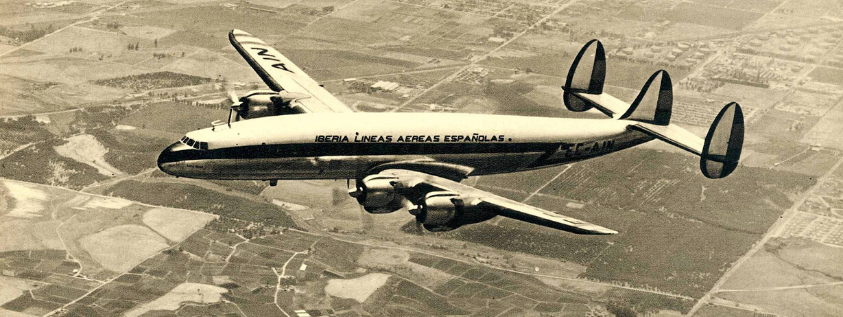The Iberia airline we all know today is one of the oldest in the world. The history of Iberia has been growing and consolidating throughout its almost 85 years.
It was created on 28 June 1927 and began its commercial activity with three Rohrbach Roland aircraft, with a capacity for ten passengers travelling in wicker seats due to their lightness -weight has always been the enemy to be beaten in aviation- , two crew members, luggage and cargo, and whose top speed was 205 km/h.
The first flight took place on December 14th of this year, in the presence of King Alfonso XIII, connecting, as it could not be otherwise, the cities of Madrid and Barcelona.
The ticket cost 163 pesetas, and 300 pesetas for a return flight. Already in the first month, it had made 57 flights and transported 287 passengers. The flight lasted three and a half hours.
We can see a full-scale replica – except that it is a single-engine version, and not a three-engine one like the original – of this Rohrbach Roland aircraft, at the Tibidabo amusement park in Barcelona. The famous “Tibidabo plane” is, at 90 years old, the third oldest attraction in the hundred-year-old park. It is a curious fact that it is the propeller of the plane itself that drives the attraction in its “flights”.
During the Spanish Civil War in 1937, Iberia would suffer a break in its flights mainly due to the low availability of fuel at the time, although at the end of that same year, it managed to return to operating with German planes and crew and thus became the airline of the Bando Nacional with its headquarters in Salamanca.
In 1939, once the war was over, Iberia inaugurated flights to and from Europe, with Madrid-Lisbon being its first route. Iberia’s head office is definitively installed in Madrid. That same year, the second in the history of Iberia logo also appears.
In 1940, Iberia was granted by law exclusive rights to transport people, mail and goods within Spain and lines abroad that were established under international agreements. This exclusivity was initially to last for 20 years. The State owned the companies “Transporte Aéreos Españoles (TAE)” and Iberia, until they were both merged to form the new company called “Compañía Mercantil Anónima Iberia S.A.”. This was the time of what came to be known as “flag companies”, which proliferated in Europe after the Second World War. A situation that lasted until the 1990s with the liberalization of the air market.
The company did not make the jump to America until 1946, starting flights to Buenos Aires, and became the first company to provide air service between Europe and South America after the war. It was then that it was proposed that passengers should have assistance for long flights, and from there the figure of the hostess emerged as a new concept. In order to easily identify the flight attendants, which is how the flight attendants were known, it was decided to create a military style uniform, white in summer and blue in winter with a matching hat, which would evolve over the years.
A few years later, in August 1954, the company inaugurated another key route for its international expansion: Madrid – New York and a few days later the first commercial flight operated with Lockheed L-1049 Super Constellation aircraft took place. The first three aircraft were named after Columbus’ caravels: Pinta, Niña and Santa Maria.
In the next article we will continue the history of Iberia to what the company is today.
Find out more about other great companies in the aviation world here.
